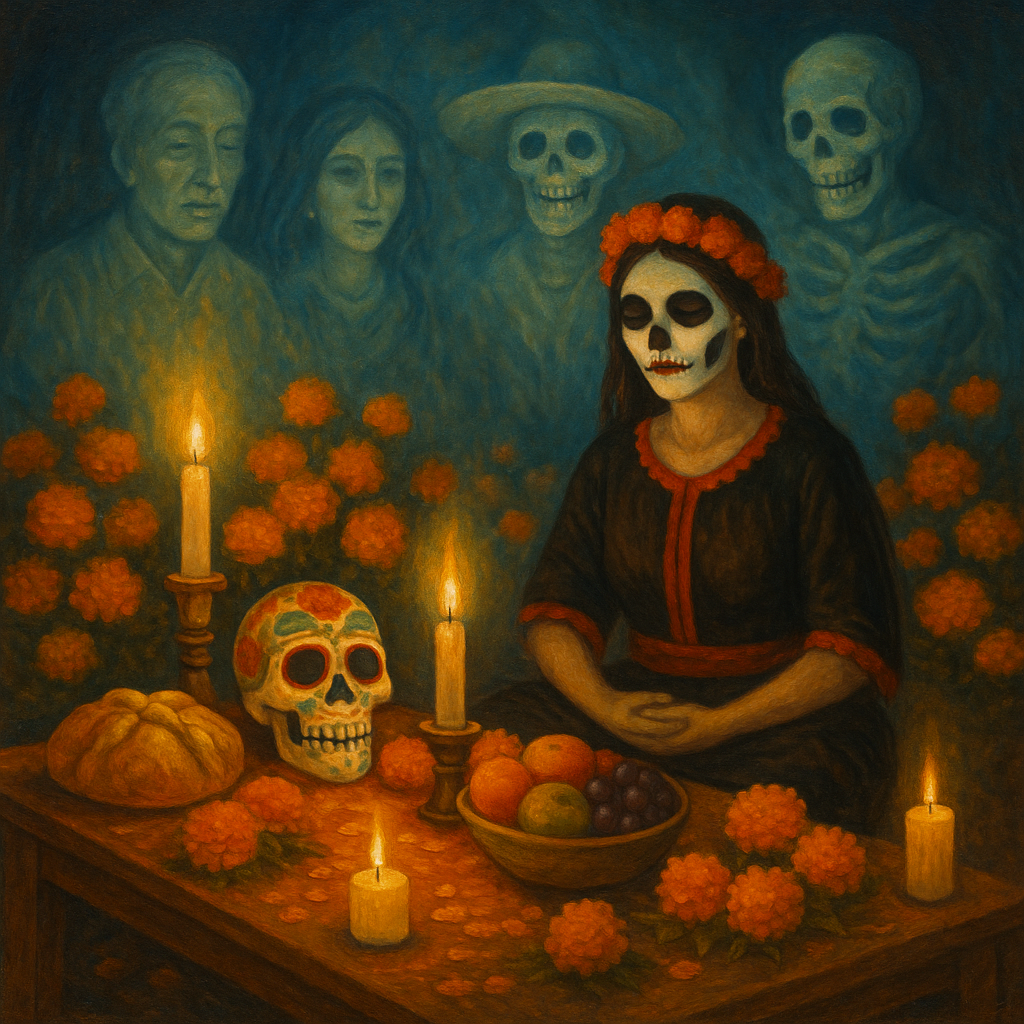Mexican Beliefs in Spirit Communication, Mediumship, and Spiritual Dimensions
Introduction
Mexico has one of the world’s richest spiritual landscapes, where Indigenous cosmologies, Catholic traditions, and folk practices merge into a worldview that embraces communication with spirits and the existence of multiple spiritual dimensions. From pre-Hispanic rituals honoring ancestors to modern-day Day of the Dead celebrations and the work of shamans and curanderos, spirit communication and mediumship are woven deeply into Mexican culture.
Indigenous Foundations: Mesoamerican Spirit Beliefs
1. The Aztec and Maya Worldview
Both the Aztecs (Mexica) and Maya believed in a multi-layered cosmos.
The Aztec cosmos included 13 heavens and 9 underworlds, where spirits, gods, and the dead resided.
The Maya described realms such as Xibalba (the underworld), where spirits interacted with humans through ritual and vision.
2. Shamanic Mediumship
Shamans (tlamacazqui for the Aztecs, ajq’ij for the Maya) entered trance through drumming, chanting, and sacred plants to communicate with ancestors, deities, and animal spirit guides (nahuales or naguales).
These mediums served as healers, diviners, and messengers, guiding communities by bringing knowledge from other dimensions.
3. Ancestor Veneration
Ancestors were believed to remain active in the spiritual world, requiring offerings and ritual communication.
Seasonal festivals dedicated to the dead formed the foundation of today’s Día de los Muertos (Day of the Dead).
Catholic Influence and Syncretism
1. Day of the Dead
Blending Indigenous ancestor veneration with Catholic All Saints’ and All Souls’ Days, Día de los Muertos (Nov 1–2) is Mexico’s most famous expression of spirit communication.
Families create altars (ofrendas) with food, candles, and marigolds to welcome spirits of loved ones back to the human world.
During these days, the veil between worlds is believed to thin, allowing direct communication with the dead.
2. Spiritual Intermediaries
Catholic saints and the Virgin of Guadalupe often serve as mediums between God and humanity.
Prayers, candles, and petitions are ways of sending messages across spiritual dimensions.
Folk Mediumship and Healing Traditions
1. Curanderos and Curanderas
Traditional healers (curanderos) use prayer, herbs, and ritual to communicate with spirits.
They often act as mediums, channeling ancestral or divine guidance for healing physical, emotional, and spiritual ailments.
2. Spirit Possession and Exorcism
Folk rituals include spirit possession by saints or supernatural beings during trance.
Exorcism-like practices are performed to remove harmful spirits or energies.
3. Brujería and Spirit Work
In Mexican folk magic, brujos (sorcerers) are believed to contact spirits for divination, protection, or curses.
Communication with the spirit world is sought through altars, candles, and ritual invocations.
Other Spiritual Dimensions in Mexican Belief
Mexican traditions recognize multiple overlapping realms:
The Human World (Tonacayotl): Daily life infused with spiritual forces.
The Spirit World: Populated by ancestors, animal guardians (nahuales), and wandering souls.
The Underworld (Mictlan / Xibalba): Realms of the dead, ruled by deities like Mictlantecuhtli (Aztec death god).
Celestial Realms: Domains of gods and saints, accessible through prayer, trance, or divine visions.
Techniques of Spirit Communication
Mexican culture uses diverse techniques to connect with the spirit world:
Altars and Offerings (Ofrendas): Direct dialogue with spirits during Día de los Muertos and family rituals.
Trance and Shamanic Journeys: Shamans use chanting, drumming, and sacred plants to travel to spiritual dimensions.
Dreams and Visions: Dreams are widely considered messages from spirits or ancestors.
Divination: Tarot, candles, egg cleansings (limpias), and other rituals reveal spirit guidance.
Spirit Possession: Mediums or devotees allow saints, ancestors, or deities to temporarily embody them.
Comparisons with Western Mediumship
Similarities: Trance, spirit possession, ancestor contact, healing, and communication with other dimensions.
Differences: Mexican mediumship is communal and ritualized, tied to festivals (like Day of the Dead) and healing practices, rather than private séances. It emphasizes ancestral bonds and cultural identity more than evidential proof of survival.
Continuity and Modern Practice
Today, spirit communication remains central in Mexican spirituality:
Día de los Muertos is celebrated worldwide, preserving ancient traditions of ancestor contact.
Curanderos and folk mediums are still sought for healing and spiritual guidance.
New Age and Spiritualist groups in Mexico blend traditional practices with global forms of mediumship.
Cultural performances such as Aztec dances maintain shamanic elements of spirit embodiment.
These practices show that Mexico’s spiritual traditions are not relics, but living connections between the seen and unseen worlds.
Conclusion
Mexican beliefs in spirit communication, mediumship, and spiritual dimensions weave together Indigenous cosmologies, Catholic rituals, and folk traditions into a vibrant system of spirituality. From shamans and curanderos to Día de los Muertos altars, these practices maintain continuous dialogue with ancestors, gods, and spirits.
Unlike Western mediumship, Mexican traditions focus on communal remembrance, healing, and cultural harmony, creating a living spiritual heritage that bridges past and present.

